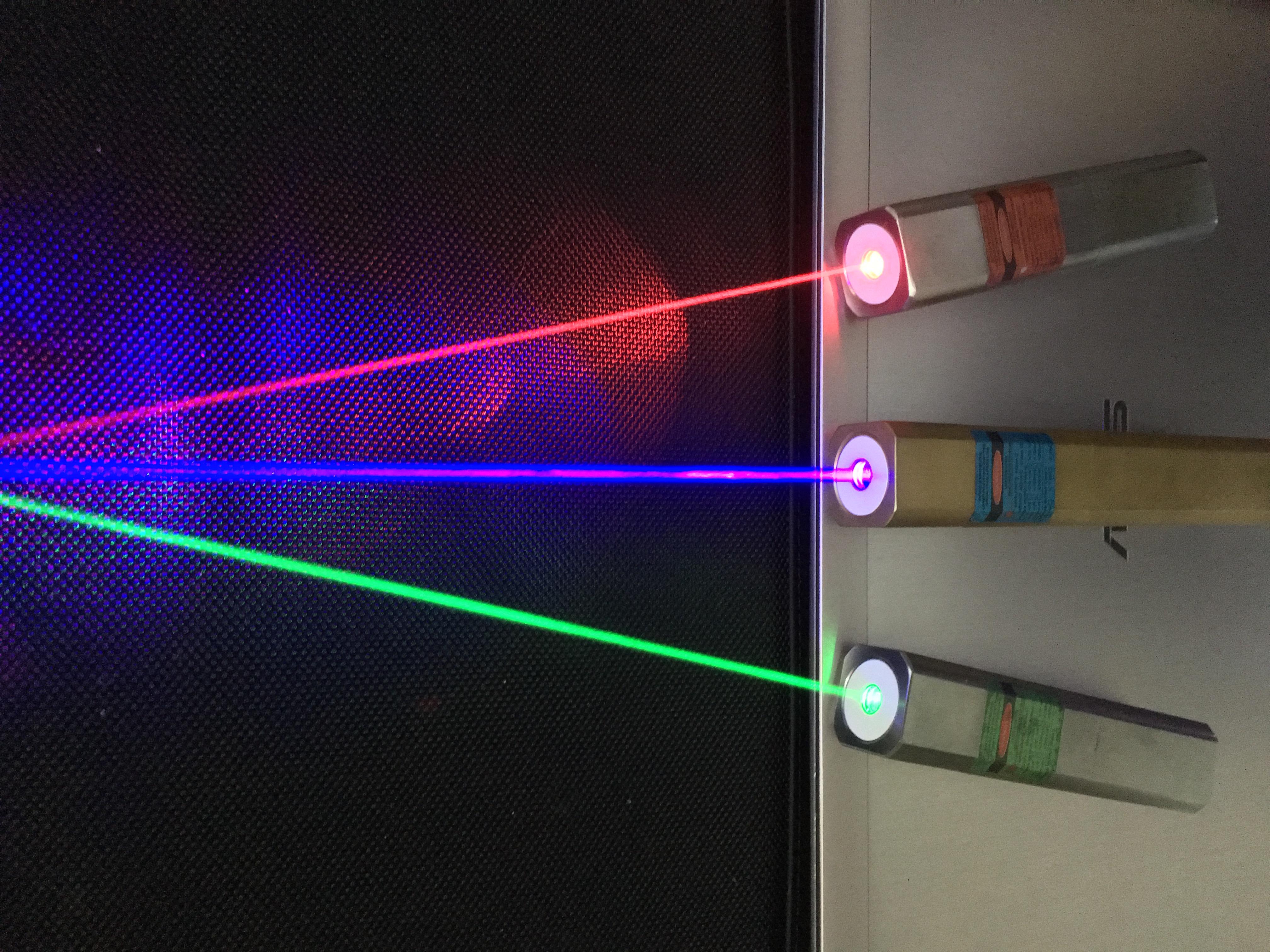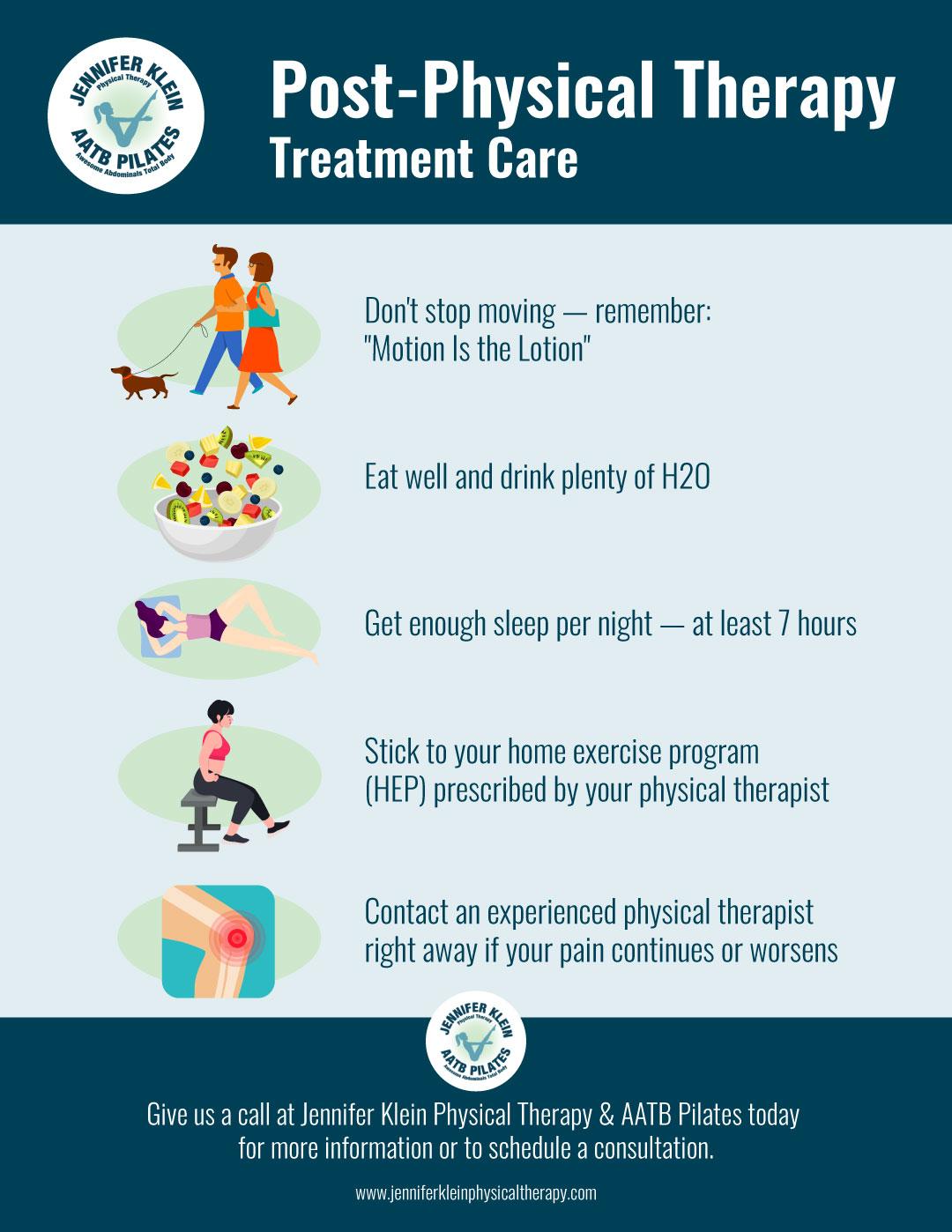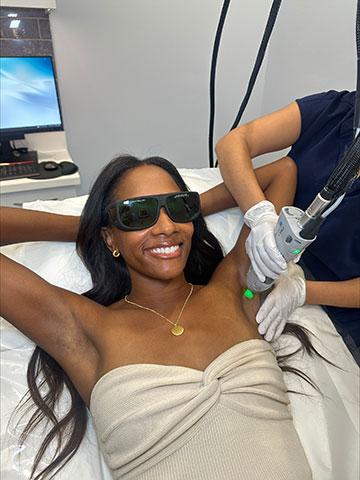In a world where self-expression and confidence are paramount, achieving smooth, radiant skin is a desire shared by many. Yet, for people of color, the journey to effective laser hair removal can often feel fraught with challenges and misconceptions. Enter “Laser Hair Removal for People of Color: Your Guide to Success”—a comprehensive exploration designed to shed light on the nuances and breakthroughs that make this transformative treatment accessible and effective for all skin tones. Whether you’ve grappled with unwanted hair or hesitated due to concerns about safety and efficacy, this guide aims to inspire and inform, paving the way for your smoothest, most confident self. Join us as we demystify the process, debunk the myths, and celebrate the advancements that empower you to achieve the results you desire, with the respect and understanding your unique skin deserves.
Table of Contents
- Understanding the Unique Challenges: How Melanin Affects Laser Hair Removal
- Choosing the Right Laser: Why Skin Tone Matters and Finding the Ideal Device
- Pre-Treatment Preparations: Essential Steps for Safe and Effective Results
- Expert Tips on Minimizing Risks and Maximizing Benefits
- Post-Treatment Care: Ensuring Long-Lasting Smoothness and Skin Health
- Q&A
- Final Thoughts
Understanding the Unique Challenges: How Melanin Affects Laser Hair Removal
One of the primary factors that differentiate the experience of laser hair removal for people of color is **melanin**—the pigment that gives skin its color. Melanin absorbs the laser energy, which is intended to target the hair follicle. This absorption can pose risks of skin discoloration and burns if the correct type of laser is not used. Modern advancements ensure safer and more effective treatments by using diverse technologies designed to accommodate melanin-rich skin.
Here are some key considerations:
- Choice of Laser: The Nd:YAG laser is often recommended for melanin-rich skin because it has a longer wavelength, which allows for deeper penetration and minimizes the risk to the epidermis.
- Practitioner Expertise: Choose a technician who has experience working with a variety of skin tones and understands the complexities involved.
- Test Spots: Performing test spots on a small area can help gauge the skin’s reaction to the treatment.
Melanin’s reaction to laser treatments can vary, thus requiring custom approaches. Laser settings need to be adjusted carefully to balance efficacy and safety. Protocols involve lower energy settings and longer wavelengths to navigate the melanin absorption while targeting hair follicles effectively. Patient-specific variables should always guide the treatment plan to enhance results and avoid adverse effects.
Comparative Overview of Laser Types:
| Laser Type | Skin Compatibility |
|---|---|
| Nd:YAG | Suitable for all skin tones |
| Alexandrite | Best for lighter skin tones |
| Diode | Effective for intermediate skin tones |
Understanding these challenges is crucial for those with melanin-rich skin seeking laser hair removal. Tailored treatments, experienced practitioners, and advanced technology pave the way for safe, effective results that enhance confidence and well-being. Explore and embrace your journey to smoother skin, knowing that modern science and specialized care are on your side.

Choosing the Right Laser: Why Skin Tone Matters and Finding the Ideal Device
When embarking on your laser hair removal journey, it’s essential to recognize the significance of choosing the right laser for your unique skin tone. The type of device used can dramatically impact the effectiveness and safety of your treatment. **People of color** often have more melanin in their skin, which can increase the risk of burns or pigmentation issues if the incorrect laser is employed.
To cater to diverse skin tones, several lasers have been developed. Notably, the **Nd:YAG laser** is known for being particularly effective for darker skin tones. This laser penetrates deeper into the skin, bypassing the melanin in the epidermis and targeting the hair follicles directly. Another option includes the **Diode laser**, which can be adjusted to work safely on a wider range of skin tones.
- **Nd:YAG Laser:** Suitable for darker skin tones, minimizes melanin absorption.
- **Diode Laser:** Versatile and can be calibrated for various skin tones and hair types.
- **Alexandrite Laser:** Generally better for lighter skin tones but can be adjusted for darker tones by experienced providers.
| Laser Type | Skin Tone Suitability | Unique Benefits |
|---|---|---|
| Nd:YAG | Dark to Medium | Low risk of burns for darker skin |
| Diode | All skin tones | High customization options |
| Alexandrite | Light to Medium | Efficient for lighter skin tones |
Finding the ideal laser for your skin involves consulting with a professional who understands the nuances of different skin tones. It’s not just about the laser type, but also the expertise of the provider. **Experienced practitioners** can adjust settings and employ techniques that minimize risks and maximize results, ensuring that your laser hair removal process is both safe and effective.

Pre-Treatment Preparations: Essential Steps for Safe and Effective Results
Embarking on a laser hair removal journey requires careful preparation, especially for people of color who may have unique skin needs. One critical step is consulting a qualified and experienced professional who understands how to safely and effectively treat darker skin tones. During this consultation, your specialist will assess your skin type and hair texture while crafting a personalized treatment plan tailored to your goals.
To ensure optimal results and minimize risks, follow these essential preparations:
- Avoid sun exposure: Sunburnt or tanned skin can increase the risk of side effects such as burns and hyperpigmentation. Apply broad-spectrum sunscreen diligently for at least two weeks before your session.
- Refrain from waxing or plucking: These hair removal methods can disrupt the hair follicle and make laser treatments less effective. Stick to shaving or trimming instead.
- Stay hydrated: Drinking adequate water helps maintain skin health and can facilitate smoother treatments.
Additionally, it’s important to prepare your skin in the days leading up to your session. Here’s a quick table to summarize these pre-treatment dos and don’ts:
| Do | Don’t |
|---|---|
| Shave the treatment area 24 hours before | Apply lotions, makeup, or deodorants |
| Moisturize your skin daily | Use topical creams containing Retin-A or Glycolic Acid |
| Wear loose-fitting clothing to your appointment | Take medications that photosensitize your skin |
Your overall health plays a significant role in the success of your laser hair removal treatment. Commit to a balanced diet rich in vitamins and antioxidants to promote skin resilience. **Manage stress** through meditation, exercise, or hobbies—keeping stress levels in check can positively impact your skin’s healing capabilities. With these preparations, you empower yourself to achieve the radiant, smooth skin you deserve!

Expert Tips on Minimizing Risks and Maximizing Benefits
For people of color considering laser hair removal, finding the right clinic and equipment is crucial. **Not all lasers are created equal** when it comes to varying skin tones. Alexandrite and Diode lasers may not be the best options for darker skin due to their wavelength and light absorption characteristics. Instead, **Nd:YAG lasers** are recommended for their deeper penetration and lower risk of damaging melanin-rich skin.
Preparation is key to minimizing risks and maximizing the benefits of your treatment. **Here are some tips** to prepare for your sessions:
- Avoid sun exposure and tanning for at least two weeks prior to treatment.
- Don’t use creams that contain **retinoids or alpha hydroxy acids** (AHAs) before your session.
- Shave the area to be treated 24-48 hours beforehand, but avoid waxing, plucking, or epilating.
- Consult with a dermatologist if you have any skin conditions such as eczema or psoriasis.
Aftercare is just as important as preparation. **Post-treatment care tips** include:
- Apply a high SPF sunscreen on treated areas to prevent hyperpigmentation.
- Use a soothing aloe vera gel or a cold pack to reduce redness and swelling.
- Avoid hot showers, saunas, and strenuous exercise for 24-48 hours post-treatment.
- Steer clear of products with harsh chemicals, like glycolic acid or benzoyl peroxide, which can irritate the skin.
Consistency is the key to success. Laser hair removal typically requires multiple sessions for optimal results. Here’s a rough guideline of what to expect for your treatment plan:
| Skin Tone | Sessions Needed | Interval |
|---|---|---|
| Light to Medium Skin Tones | 6-8 Sessions | 4-6 Weeks |
| Medium to Dark Skin Tones | 8-10 Sessions | 6-8 Weeks |

Post-Treatment Care: Ensuring Long-Lasting Smoothness and Skin Health
Maintaining the results of your laser hair removal treatment requires a combination of proper skin care and diligent post-treatment habits. **Moisturize** and **hydrate** regularly to keep your skin soft and healthy. Using a gentle, fragrance-free moisturizer will help soothe any post-treatment irritation and enhance the smoothness of your skin.
It’s crucial to **avoid direct sun exposure** immediately after your sessions. The treated areas are especially sensitive to UV rays, which can lead to pigmentation issues. Applying a broad-spectrum sunscreen with at least SPF 30 is essential whenever you step outside. Make sun protection an integral part of your routine to safeguard your skin’s health and the results of your treatment.
After undergoing laser hair removal, you might notice some **redness and swelling**. This is a common side effect and usually subsides within a few hours. To alleviate discomfort, you can apply a cold compress to the treated area or use over-the-counter soothing creams recommended by your dermatologist. Remember to avoid hot showers and strenuous physical activities for at least 24 hours post-treatment to prevent irritation.
| Do’s | Don’ts |
|---|---|
| Use soothing post-treatment creams. | Avoid scratching or picking at the treated area. |
| Apply sunscreen daily. | Stay away from tanning beds and sunbathing. |
| Maintain a regular skin care regimen. | Ignore signs of infection or prolonged redness. |
Lastly, adopt a consistent and gentle exfoliation routine a few days post-treatment. This can help prevent ingrown hairs by removing dead skin cells and promoting smoothness. Use a mild exfoliant and avoid harsh scrubbing to prevent irritation. Listening to your skin and respecting its response to laser hair removal will profoundly contribute to achieving and preserving long-lasting smoothness and overall skin health.
Q&A
Q: Is laser hair removal safe for people of color?
A: Yes, laser hair removal is safe for people of color, but it’s important to choose the right technology and a qualified professional. Advances in laser technology have made it more accessible and effective for all skin tones. Specifically, Nd:YAG lasers have shown to be particularly safe and efficient for darker skin tones as they target the hair follicle while minimizing the risk of skin damage.
Q: What should people of color look for in a laser hair removal provider?
A: When choosing a provider, look for a clinic that has experience treating diverse skin tones. Ensure the practitioner is certified and inquire about the types of lasers they use. Providers that utilize Nd:YAG and diode lasers are typically a good option for people of color. Additionally, read reviews and ask for before-and-after photos of clients with similar skin tones.
Q: Are there any specific risks for people of color undergoing laser hair removal?
A: While the risks are generally minimal, people of color can be more susceptible to side effects such as hyperpigmentation or hypopigmentation if an inappropriate laser type or incorrect settings are used. Choosing the right technology, such as Nd:YAG, and an experienced practitioner significantly reduces these risks. Always follow pre- and post-treatment care instructions to ensure the best outcome.
Q: How does laser hair removal work on darker skin tones?
A: Laser hair removal works by targeting the melanin in hair follicles. For darker skin tones, there is more melanin in the skin, which can compete with the melanin in the hair. Technologies like Nd:YAG lasers have longer wavelengths, which penetrate deeper into the skin and bypass the melanin in the epidermis, targeting the hair follicle more precisely.
Q: How many sessions are typically needed for effective laser hair removal?
A: The number of sessions required can vary depending on factors like hair type, hair growth cycle, and individual skin tone. On average, most people need between 6 to 8 sessions spaced 4 to 6 weeks apart to achieve desired results. Your practitioner will tailor a treatment plan specific to your needs.
Q: What can people of color do to prepare for a laser hair removal session?
A: Prior to your session, avoid sun exposure and tanning for at least two weeks, as tanned skin increases the risk of side effects. Shave the treatment area 24 hours before your appointment, and avoid plucking, waxing, or electrolysis for at least six weeks. Inform your provider about any medications you are taking, as some can affect your skin’s sensitivity to the laser.
Q: What post-treatment care is recommended for people of color?
A: After your treatment, it’s crucial to avoid sun exposure and use a broad-spectrum SPF 30 or higher to protect the treated area. Don’t scratch or pick at your skin, and avoid hot showers, saunas, and activities that cause excessive sweating for at least 24 to 48 hours. Moisturize the treated area with a gentle, fragrance-free lotion, and follow any additional aftercare instructions provided by your practitioner.
Q: Can laser hair removal help with razor bumps and ingrown hairs?
A: Absolutely! Laser hair removal is highly effective at reducing and even eliminating razor bumps and ingrown hairs. By targeting the hair follicle and reducing hair growth, it minimizes the chances of hair turning back into the skin, which is a common cause of these issues for people of color.
Q: What should people of color expect in terms of results and maintenance?
A: Results can vary, but most people will see a significant reduction in hair growth after their complete treatment cycle. Maintenance sessions, typically once or twice a year, might be required to keep the area smooth and free from hair. Consistency and following your provider’s recommendations are key to achieving and maintaining successful outcomes.
Laser hair removal can be a life-changing experience, offering confidence and convenience—no more shaving, waxing, or worrying about ingrown hairs. With the right approach and professional guidance, people of color can achieve beautiful, lasting results. Take the first step towards your smooth-skin journey today!
Final Thoughts
laser hair removal is no longer a one-size-fits-all procedure; it holds remarkable potential for success in people of color with the right approach. Understanding your skin type, choosing the appropriate technology, and consulting with experienced professionals can empower you to achieve smoother, hair-free skin with minimal risk.
Every journey toward laser hair removal is unique, but armed with the right knowledge and resources, you can confidently navigate this path to smooth, radiant skin. As we advance in dermatology and laser technology, the possibilities for achieving your desired outcomes, regardless of skin tone, become ever more attainable. Stay informed, be persistent, and take that proactive step toward a future free of unwelcome hair, glowing with the beauty and confidence you deserve.
Here’s to your success in this journey—one that celebrates both your individuality and your radiant skin!






